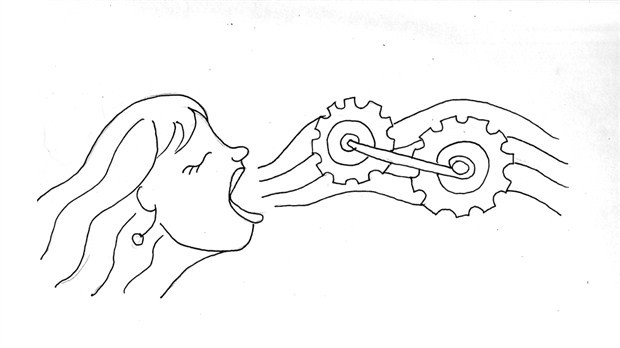
Most people use it all day every day — we speak, we sing, we laugh — and yet many of us have no idea how our voices work.
It’s an amazing system that operates much like a wind instrument and is roughly divided into three parts: the power source (your lungs), the vibrator (your voice box) and the resonator (your throat, nose, mouth and sinuses).
In short, when we inhale, the diaphragm — the large muscle that runs across our abdomen — drops down and the lungs expand as the air travels in. When you go to speak, which happens courtesy of a signal from your brain that travels along your laryngeal nerve, you push the air back out through the trachea, or windpipe. (Think bellows.)
Your larynx sits on top of your windpipe and contains two folds, or vocal cords, and they open and close when you speak or swallow. When you are breathing normally they are open and relaxed; but when you speak, the two vocal folds come together and the air passes through them.
In the process they vibrate rapidly—from 100-1000 times per second—depending on the pitch (faster is higher), alternately trapping air and releasing it. Each little puff of air is the start of a sound wave.
The pitch is controlled by the length and tension of the vocal cords, which are controlled by surrounding muscles and cartilage. When the vocal folds are lengthened, they’re also thinner and more taut, like a rubber band.
Check out this incredible, and slightly creepy, video of vocal cords in action:
In general, most men’s vocal folds vibrate at 90-500 Hz, and average at about 115 Hz in conversation. Women’s vocal folds tend to range from 150-1000 Hz, and average around 200 Hz in conversation.
On their own, vocal folds produce little more than a buzzing noise, like the mouthpiece on a trumpet; it’s only once the sound travels through the resonator, your mouth and nose, that the voice takes shape, using your jaw, tongue and lips to form the sounds.
Want answers to more science and music questions? You can find all of them here.